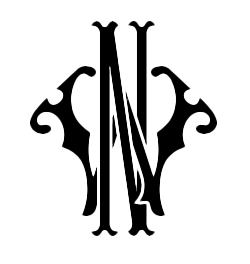


On the face of it the sprawling iconic landscape of Monument Valley could not be further from the socialist blocks nested around the arteries of European cities. A housing model known for high concentration and repetition of elements was first conceptualised in Sweden and Germany, then replicated from the 1960s on in the artist’s native Slovenia. While a sparse sandstone land conjures images of frontier towns vividly animated by classic Western tropes and radiates potential stretching beyond, a densely populated urban environment punctuated by uniform shaped windows, a concrete beehive of sorts, rises in front of its inhabitants like an impenetrable wall.
Nana Wolke works with shame. It’s co-dependency with desire, especially the desire to look when one is not supposed to, is realized in staged scenes focused on the atmosphere of a specific space or situation rather than narrative built around it. Whilst the defined edge of a canvas naturally crops an image, Wolke is most interested in exploring what we don’t see, whether this is a moment just before or straight after the event. High Seat can be seen as a single prolonged moment, following the logic of moving image. A large format painting violently crops a ‘landscape’ castrating it of its recognizable buttes, now suggesting the lens is lowered away from the action, a gaze stuck in the wrong frame. A large concrete wall reminiscent of the materiality of brutalist architecture extends floor to ceiling, raw in finish yet detailed by absence through a negative space within. A womb-like form of the nest elevated at a tree height is mirrored by a soft bag placed on the floor.
Wolke is interested in this claustrophobic potency of stillness. She reimagines her lived experience in the urban environment through landscape, more often spectated and imagined on screen than explored, by flattening the perspective of the pitted earthy ground, denying the potential inherent in the faded out, seemingly endless American plains. Instead, the landscape presents itself as a barrier, not unlike the rising housing blocks of her childhood. In hunting lingo high seat refers to the raised chair construction, usually propped against a tree, that can be moved to various locations to assure new vantage points. Not unlike dense forests, urban jungles have their own system of sorting out native species from intruders.
The sort of trained stillness inherent to hunters is familiar to the urban spectator, a contemporary flâneur stripped of his frock coat, now in a tracksuit, equally dividing attention between action in front of their apartment building, and distant dreams exercised in front of the TV screen. Here, rather than mere sport participants, the ones monitoring the streets linking together apartment blocks are guardians of these forcefully isolated, yet characteristically interconnected neighbourhoods.
The grainy texture of images taken at low ISO, typical of night shots, can be traced in the dotted texture of the painting. Rarely seen at night, the recognisable landscape is rendered further abstract, emphasising its primary role as a blank canvas for artist’s own experience, rather than it’s praised cultural significance.
With High Seat Wolke delves deeper into the time of night when one is not supposed to be awake, unless working a night shift or clocking in for another early morning of less than legal activity. While a cover of darkness makes a space at first seem uninviting, where we enter a state of high alert, aware of every noise and movement, a guise of stillness of one seemingly alien environment can evoke feelings of one far closer to home.




Lovebird
Concrete, hay, jesmonite
365 x 303cm, 2022

At Our House We Don’t Throw Anything Away
Jesmonite
Edition of 5 + 2 AP
36 x 26 x 15cm, 2022


At Our House We Don’t Throw Anything Away
Jesmonite
Edition of 5 + 2 AP
36 x 26 x 15cm, 2022

I Put a Spell on You
Oil on Linen
180 x 220cm, 2022